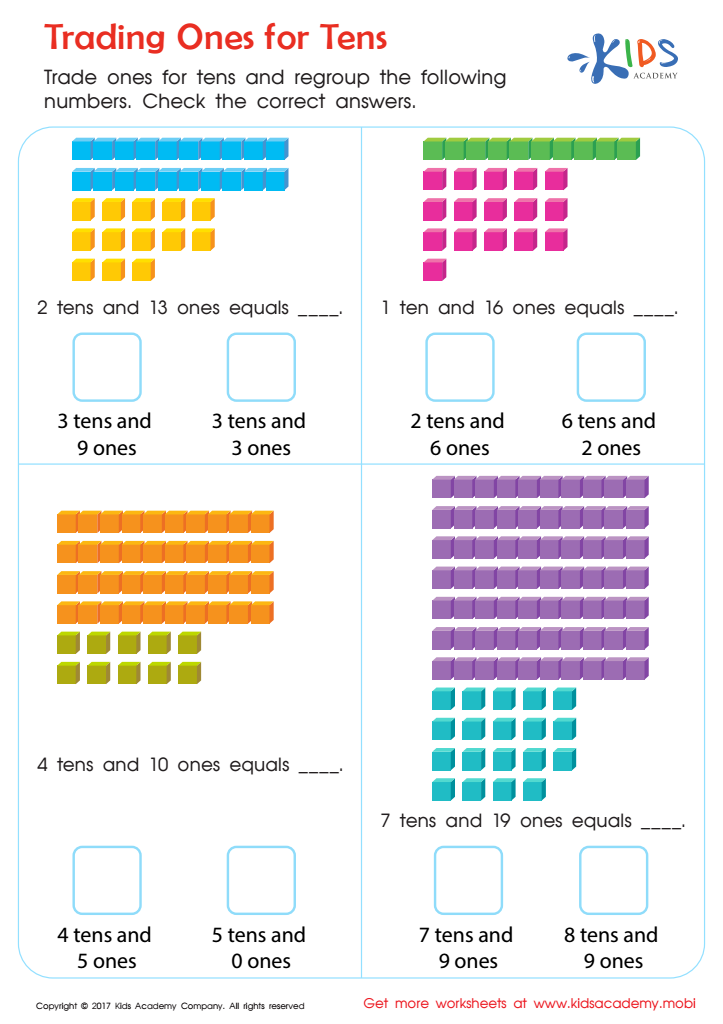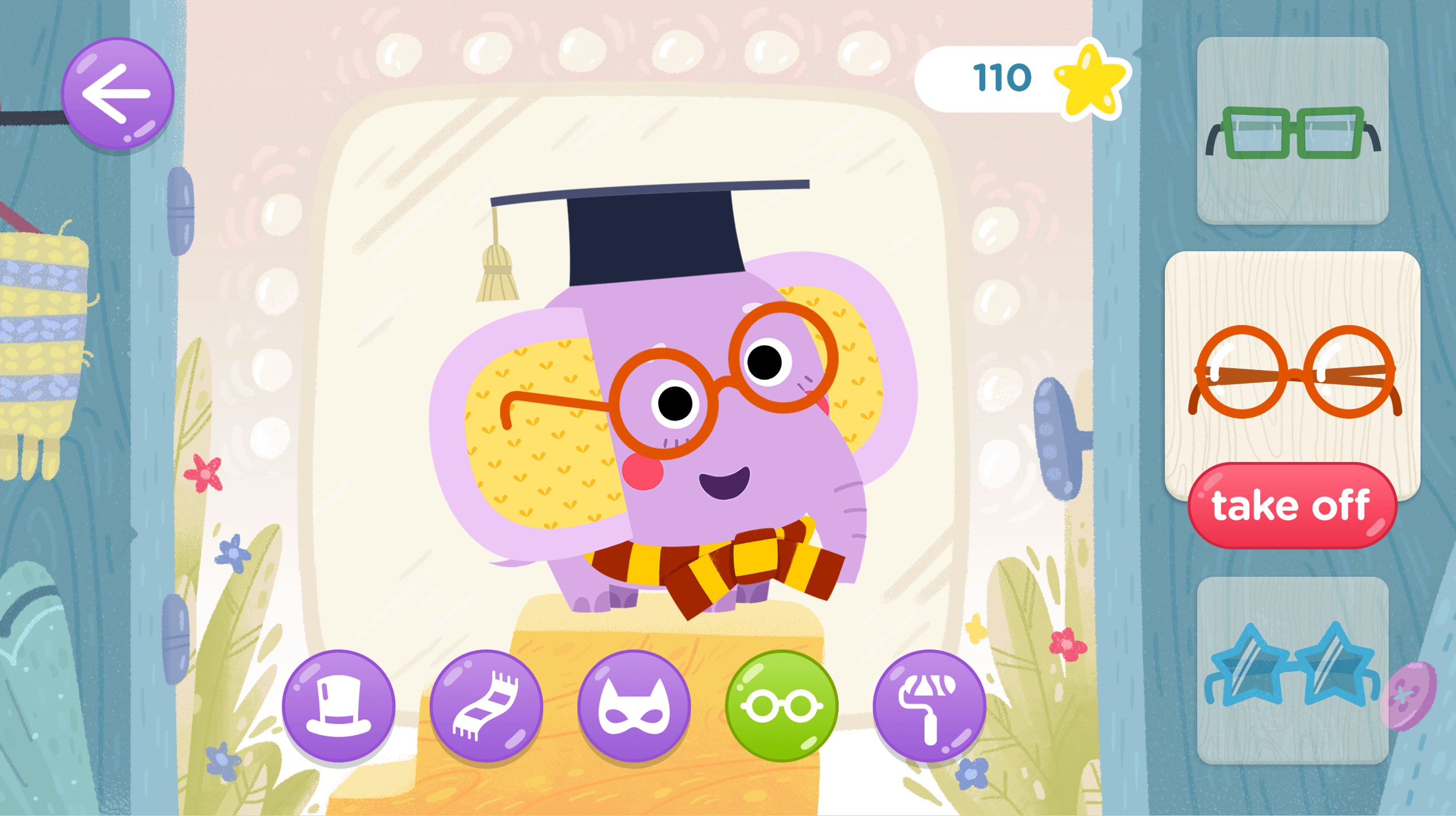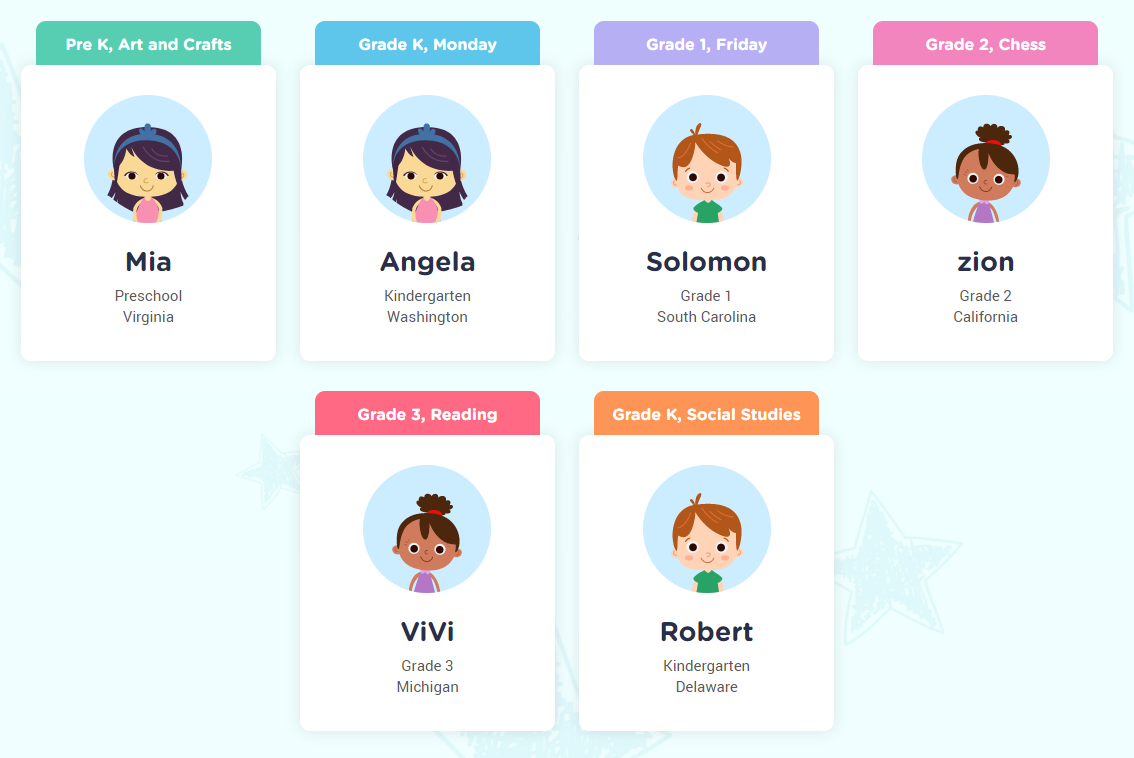Grasping number exchanges Worksheets for Kids
1 filtered results
-
From - To


Trading Ones for Tens Worksheet
Question/Answer
What does the Grasping number exchanges skill mean when it comes to Grade 1 Numbers learning?
The Grasping number exchanges skill in Grade 1 Numbers learning involves understanding the concept of place value and the ability to exchange between ones, tens, and possibly hundreds. It helps students comprehend how numbers are composed and decomposed, enabling them to perform basic math operations more effectively, such as addition and subtraction with regrouping.
Why is the Grasping number exchanges skill important for Grade 1 students?
The Grasping number exchanges skill is crucial for Grade 1 students because it lays the foundation for understanding place value, a fundamental concept in mathematics. It helps students comprehend how numbers are composed and decomposed, allowing for a deeper understanding of addition, subtraction, and ultimately, all arithmetic operations.
How does the mastery of the Grasping number exchanges skill affect a student's performance at an early age?
Mastery of the Grasping number exchanges skill at an early age significantly boosts a student's arithmetic abilities, enhances their understanding of number relationships, and lays a solid foundation for advanced mathematical learning. It improves problem-solving skills, promotes logical thinking, and facilitates a smoother transition to complex mathematical concepts, thereby positively affecting overall academic performance.
 Assign to the classroom
Assign to the classroom












